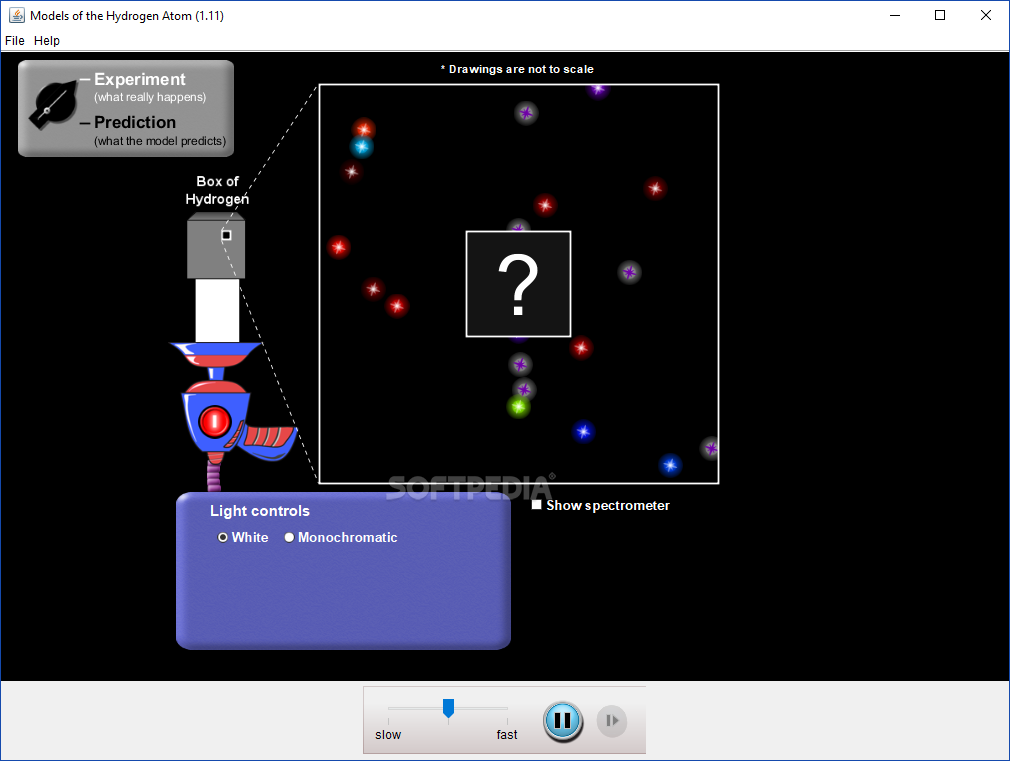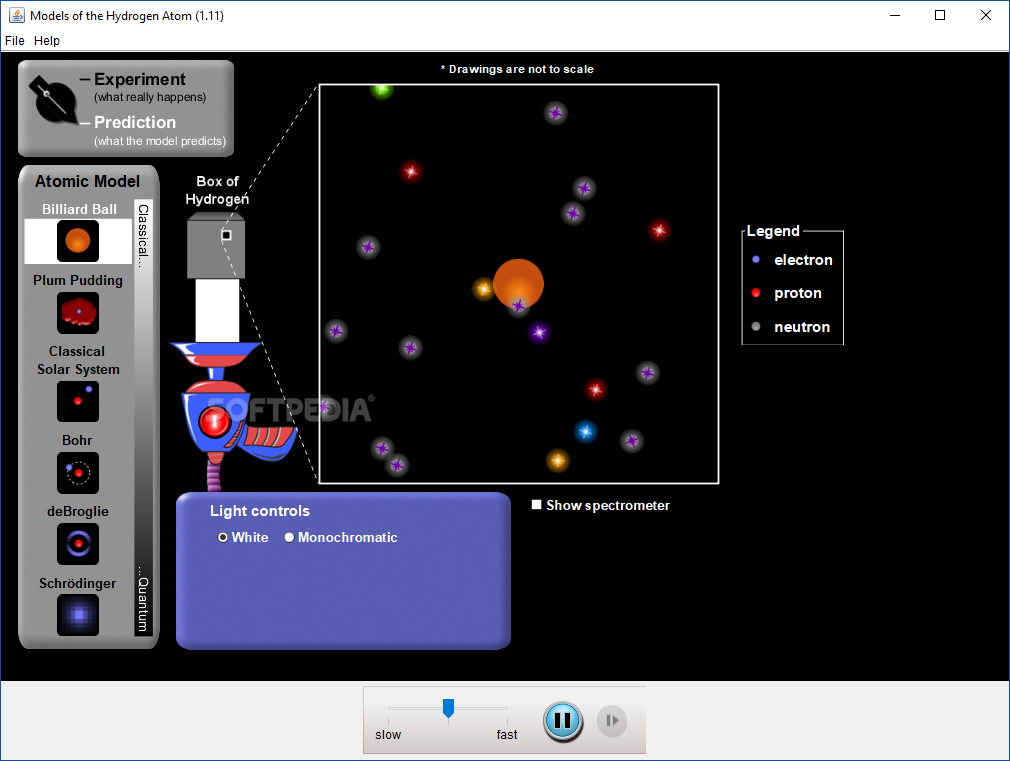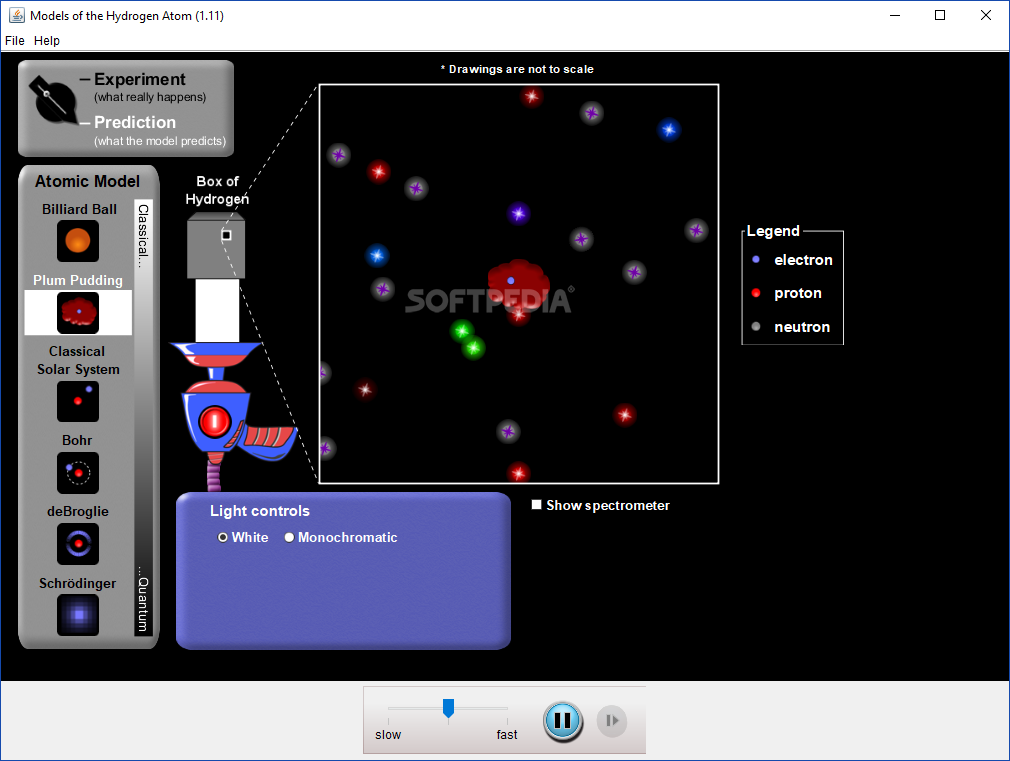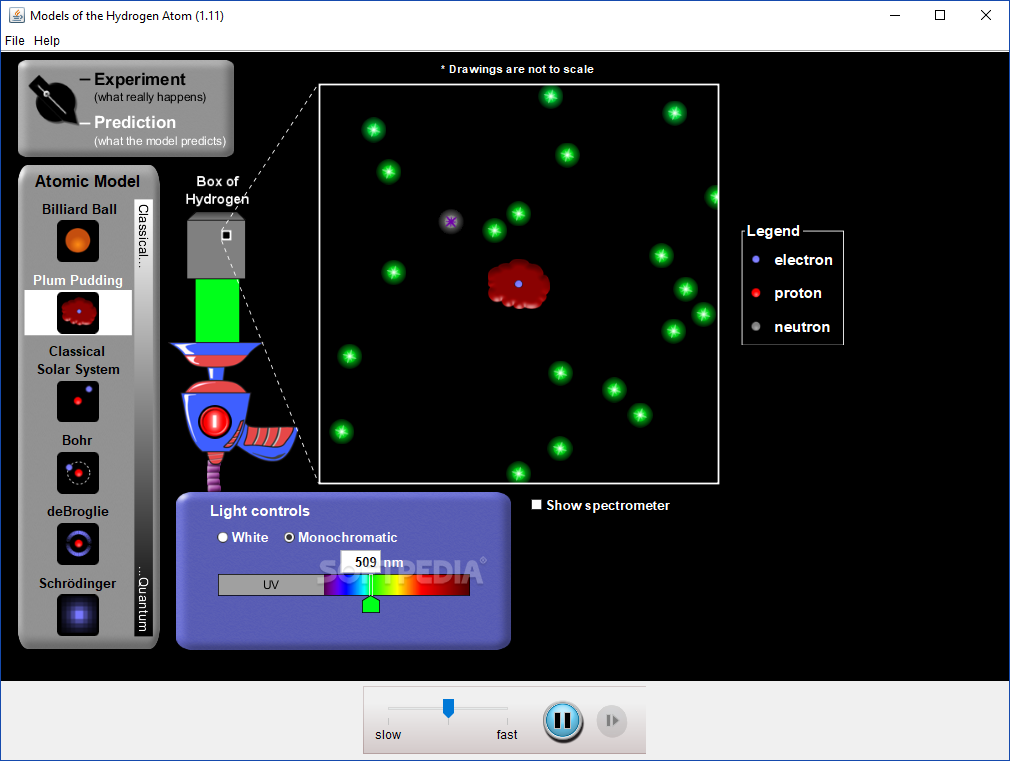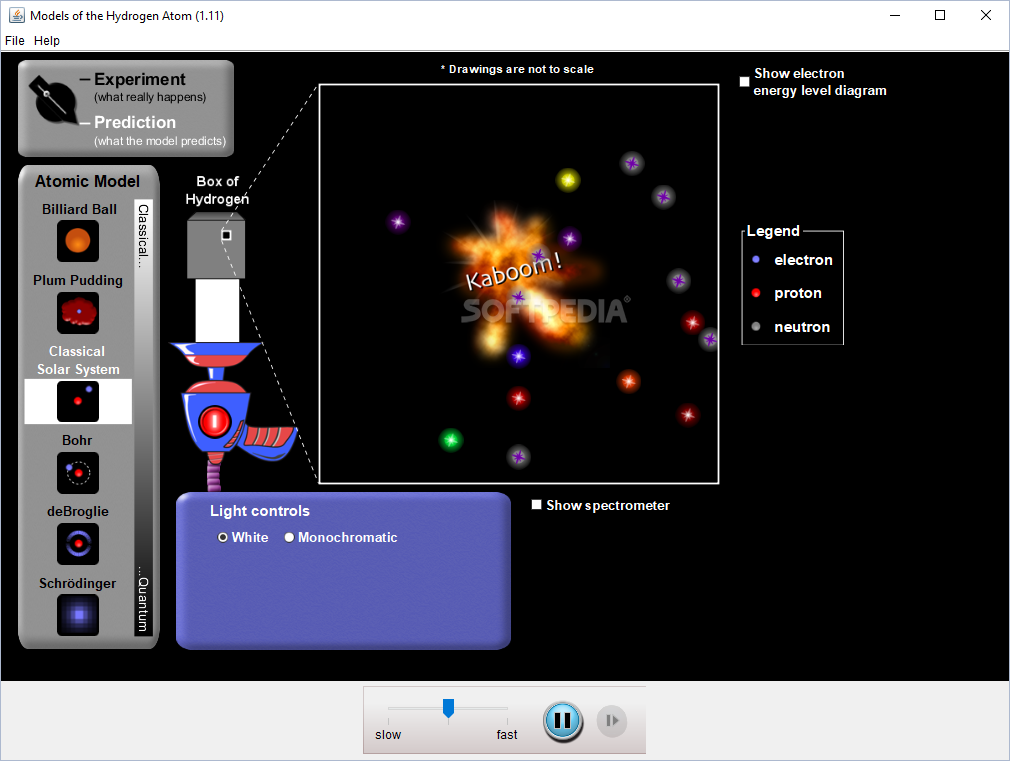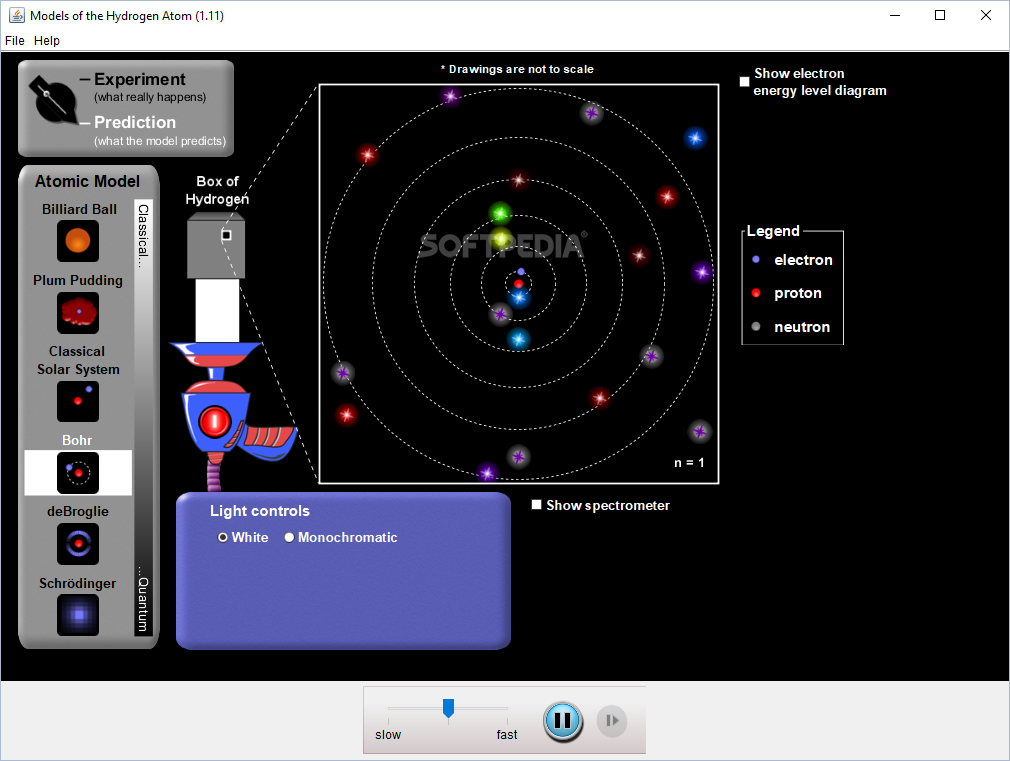
Models of the Hydrogen Atom
1.11Learn how scientists tried to figure out the structure of the hydrogen atom (and didn\'t quite get it right) with this educational animated app
Atoms are considered the building blocks of the Universe, only no one has really seen them. Although they are undetectable even to the most powerful microscopes, scientists have managed to learn a lot about atoms during centuries of theorizing and experiments.
This why the accepted model of atomic structure has changed quite a few times during history. If you want to understand more about this very specific piece of history, you could be interested in an application called Models of the Hydrogen Atom.
In order to understand the currently accepted atomic theories, it’s important to learn about the ones that were dismissed. As I’ve already mentioned, history is full of them, and a good physics teacher will probably be able to give more than a few examples.
In fact, you won’t get much information out of Model of the Hydrogen Atom without a teacher by your side. This is, after all, an educational application, but it’s nicely animated in Java and can be the basis of a fun physics lesson.
In the program’s interface, you get to shoot light at a hydrogen atom (located inside the “Box of Hydrogen”). In “Experiment” mode, you can observe how photons sometimes interact with an unseen hydrogen atom, but in “Prediction” mode, you can see how the same photons interact with various atomic structure models that were suggested throughout history.
Thus you will be able to test the billiard ball model (put forward by John Dalton in 1803), J. J. Thomson’s plum pudding model (from 1904), or more recent models suggested by scientists like Niels Bohr or Erwin Schrödinger. You can activate certain tools that may help you with your observations, such as a spectrometer or an electron energy level diagram.
It’s easy to conclude that Models of the Hydrogen Atom is an application which any physics teacher can use to make a rather abstract theory lesson more practical and fun.
This why the accepted model of atomic structure has changed quite a few times during history. If you want to understand more about this very specific piece of history, you could be interested in an application called Models of the Hydrogen Atom.
Experiment with different atomic models
In order to understand the currently accepted atomic theories, it’s important to learn about the ones that were dismissed. As I’ve already mentioned, history is full of them, and a good physics teacher will probably be able to give more than a few examples.
In fact, you won’t get much information out of Model of the Hydrogen Atom without a teacher by your side. This is, after all, an educational application, but it’s nicely animated in Java and can be the basis of a fun physics lesson.
The details of the simulation
In the program’s interface, you get to shoot light at a hydrogen atom (located inside the “Box of Hydrogen”). In “Experiment” mode, you can observe how photons sometimes interact with an unseen hydrogen atom, but in “Prediction” mode, you can see how the same photons interact with various atomic structure models that were suggested throughout history.
Thus you will be able to test the billiard ball model (put forward by John Dalton in 1803), J. J. Thomson’s plum pudding model (from 1904), or more recent models suggested by scientists like Niels Bohr or Erwin Schrödinger. You can activate certain tools that may help you with your observations, such as a spectrometer or an electron energy level diagram.
It’s easy to conclude that Models of the Hydrogen Atom is an application which any physics teacher can use to make a rather abstract theory lesson more practical and fun.
1.5 MB
Info
Update Date
Jul 14 2019
Version
1.11
License
Donationware
Created By
University of Colorado
Related software Portable
